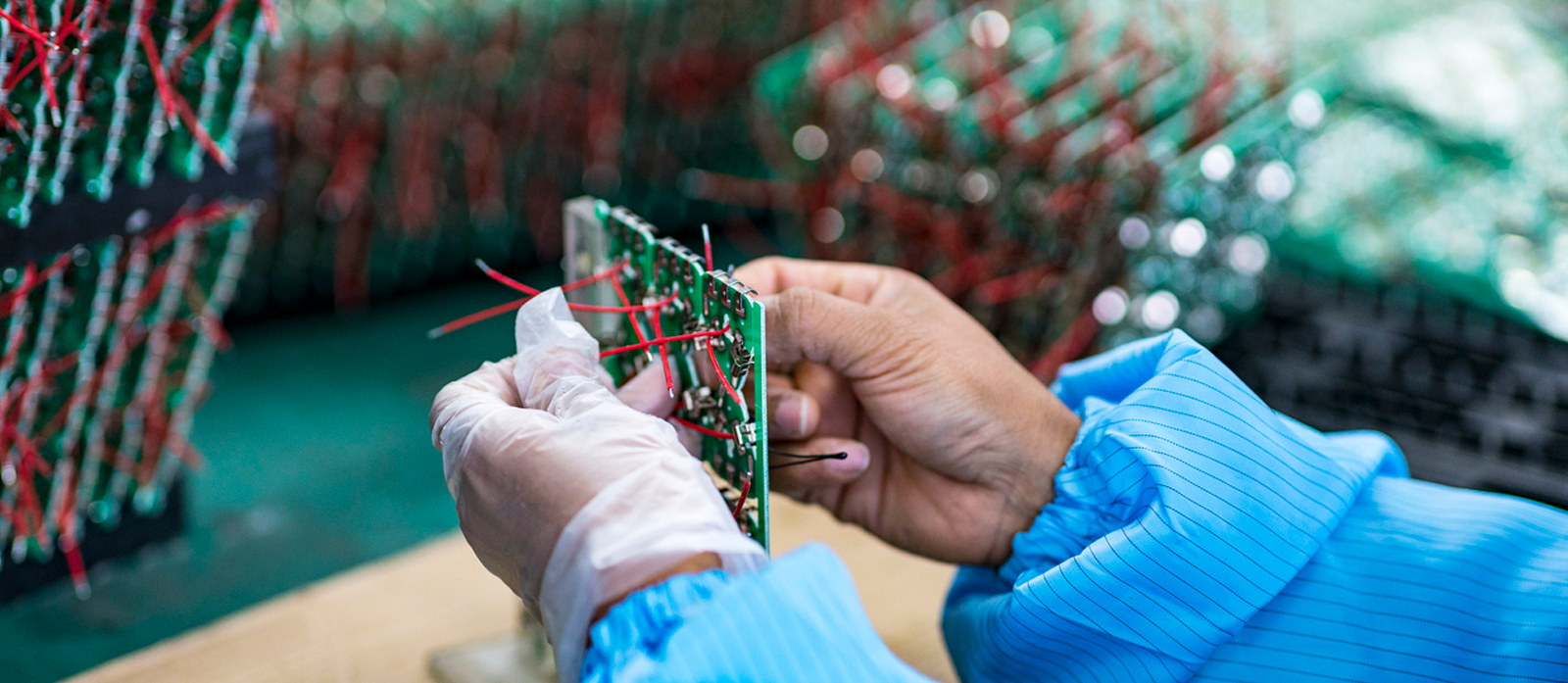
China’s COVID lockdown ripples through financial markets
May 2022
For more than a decade, Apple has been one of those companies whose earnings continually impress investors and analysts alike, in a near-continuous cycle of good news. In April, that changed.
Despite the company posting one of the best quarters in its 46-year history, investors were shocked to hear a dire prediction from CEO Tim Cook. Instead of its usual bullish outlook, Apple warned that the company could see sales decline by as much as $US8 billion due to the impact of China’s renewed lockdowns to prevent the spread of COVID.1
Apple is just one of many major companies concerned that China’s zero-COVID policy would have a material impact on their business. Not only is supply of key goods going to be affected by the closure of factories and the ban on transport to affected areas, but the Chinese consumer market has been hit hard by the shutdown, significantly crimping demand and the country’s growth prospects.
According to investment bank Nomura, about a quarter of the country’s population — some 344 million people — are in some form of lockdown. It’s a massive drain on the economy, causing output to fall 3.5% in March, while restaurant consumption is down 16%.2
By May 2, the impact on China’s industrial production had been confirmed. China’s factory output had slowed to its lowest level since February 2020 — effectively the height of the pandemic.3 The scale of China’s heavy-handed response to COVID numbers is now hitting home for markets, and currency markets have been particularly worried.
Financial markets react
On April 25, the Renminbi (RMB) slumped against the US dollar as investors digested the severity of the lockdown and feared that the lockdown would spread to Beijing. From being one of the most powerful currencies last year, China’s yuan fell more than 4% in April, its biggest monthly drop in 28 years.4
The stock market has also been hit. The benchmark Shanghai Composite Index troughed at more than 20% down year-to-date, while the tech-heavy SZSE Composite Index was down 31%. At the end of April China’s stocks were the worst performing globally, with the exception of Russian indices.5 And as foreign investors sell down their holdings, switching out of the RMB to repatriate to their own currencies, this creates downward price pressure on the RMB.
The scale of China’s heavy-handed response to COVID numbers is now hitting home for markets, and currency markets have been particularly worried.
–
Commodity currencies pummeled
Restrictions in China have stalled demand for the raw materials consumed in Chinese factories, and the so-called commodity currencies linked to them.
As the lockdown took hold and factories shut down, the Australian dollar reversed its upward trajectory and turned comprehensively downward. From a peak of 75.88 USD on April 5, the AUD has fallen nearly 6% as investors contemplated the impact of a shutdown on demand for Australian commodities like iron ore.
Iron ore prices had risen 77% between November 2021 and March this year as factories ramped up to meet growing global demand. But by the middle of March, demand had already started to wane and by May the price of iron ore, as recorded at the port of Qingdao, had fallen 10% and major mining companies like BHP fell in unison — BHP shares lost 10% in just a month.
The New Zealand dollar has also underperformed. As a major trading partner to both Australia and China, its currency shed more than 7% in April.
Note, however, that there are two sides to this equation, and the US dollar is currently outperforming other major currencies given it is seen as a ‘safe haven’ option while the war in Ukraine rages and economic uncertainty lingers. The rate of growth and rising inflation in the US also continue to put upward pressure on interest rates, a key booster of currencies.
China in a bind
How China manages to maintain economic growth in the face of lockdowns to achieve zero-COVID is a critical question for the global economy.
Economists see the two goals as contradictory, with many abandoning hope that China will hit its official target of 5.5% growth this year. The danger is that the country is effectively shuttering the key economic driver — manufacturing — that was so integral to recovery from the first COVID lockdowns.6
The People’s Republic of China’s government is trying to talk the economy up and restore confidence.
“COVID must be contained and the economy must be stabilized,” according to a readout of a Communist Party’s executive politburo meeting on state broadcaster China Central Television. “We should waste no time in planning more policy tools and enhance the strength of adjustment in due course.”7 These comments suggest stronger stimulus measures, including a ramp up in infrastructure spending, as well as a loosening of restrictions on private companies such as tech firms which have been on the outer with the Chinese Communist Party.
Markets surged on the news, with the Hang Seng China Enterprises Index surging 5% on the day. The RMB also rallied after a negative month.
How China manages to maintain economic growth in the face of lockdowns to achieve zero-COVID is a critical question for the global economy.
–
China’s slowdown means global economic fallout
Despite intentions of support and the ensuing, albeit brief, surge, global financial markets are looking for action rather than words. Supply chains are once again clogging up with cascading impacts. The number of container ships waiting off Shanghai port in April was as much as 15% higher than the previous month; carmakers have also had to close. Tesla’s Shanghai factory shut down on March 28, Volkswagen was also forced to suspend production in Shanghai in April, while auto parts maker Robert Bosch had to close two of its factories in China and institute closed-loop systems that require workers to live on the factory site.8

These supply bottlenecks are putting pressure on a global economy already suffering from the effects of rampant inflation, putting central bankers in a bind.
Central banks are already pushing up interest rates to try to dampen demand and ease inflationary pressures. Higher interest rates raise borrowing costs, thus reducing expansionary investment, as well as encouraging consumers to save rather than spend. Theoretically, that should then reduce inflation to a manageable level. However, in the current environment inflation is as much about supply issues — e.g., wheat from Ukraine, oil and gas from Russia — as it is about consumer demand. If China’s supply issues compounded by China’s restrictions mean inflation spikes are temporary, banks may go too hard on rate hikes too soon, potentially driving economies into a recession.
History would suggest it is hard to get the balance right.
According to The Economist, the US Federal Reserve has pulled off a “soft landing” only three times since 1945 and it has never done so while battling high inflation. Bond investors are not convinced the Fed can pull it off. They already are factoring in an interest rate cut in 2 years, anticipating the economy will weaken. Effectively they are predicting a recession in the next two years.
After this latest COVID-19 setback, China may not be in the same position to stimulate the global economy with big infrastructure projects, which is why all eyes are on President Xi Jinping to see if he can maintain his zero-COVID policy. If China can’t get its current breakout under control quickly with these lockdowns, the global economic outlook does not look promising.
References
2. https://www.nytimes.com/2022/04/25/business/china-covid-zero-economy.html
5. https://edition.cnn.com/2022/04/26/investing/china-stocks-yuan-covid-lockdowns-intl-hnk/index.html
6. https://blinks.bloomberg.com/news/stories/RB8HAHT0AFB4
7. https://blinks.bloomberg.com/news/stories/RB3B2ODWLU6A
Download the OFX Currency Outlook
Learn more in the latest edition of the OFX Currency Outlook. It’s been produced to help you navigate market movements today, and to understand what to watch out for in the coming months.